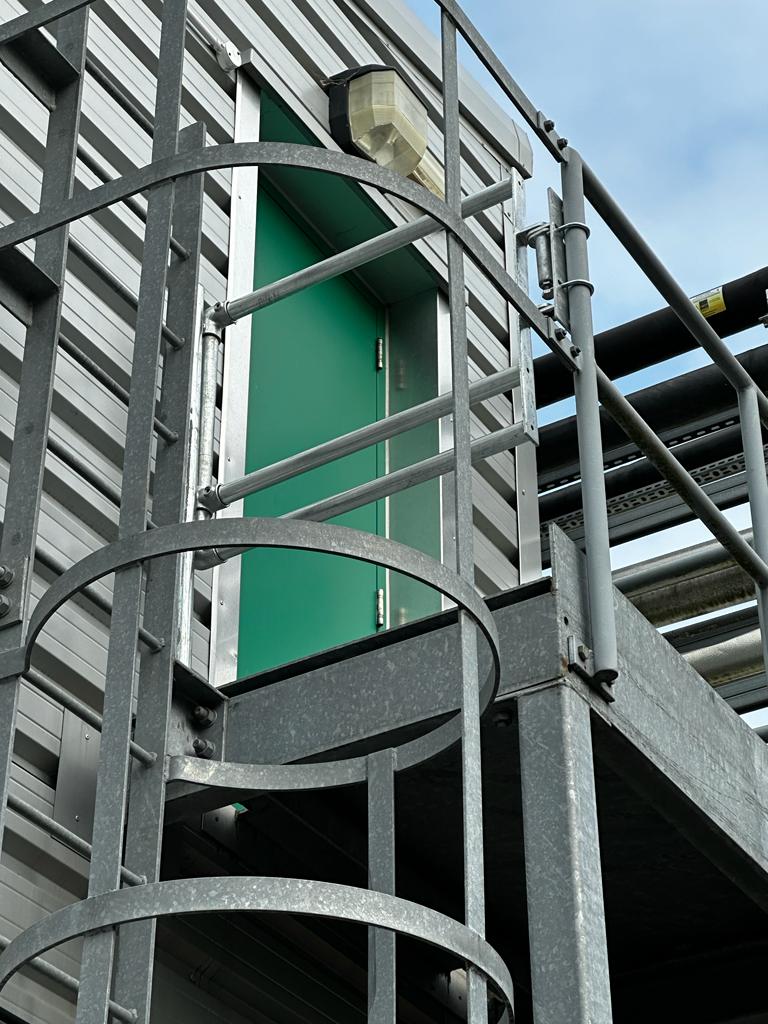Cat Ladder Installations: Enhancing Safety and Accessibility in Industrial Settings

Cat ladders play a crucial role in industrial environments, providing safe and convenient access to elevated areas such as rooftops, platforms, and machinery. These specialised ladders are designed to improve worker safety, enhance accessibility, and ensure compliance with industry regulations.
In this article, we will explore the significance of cat ladder installations in industrial settings and guide you through the process of choosing, installing, and maintaining these essential structures.
Understanding Cat Ladders
Cat ladders, also known as ship’s ladders or roof access ladders, are vertical access systems used in industrial facilities. These ladders are characterised by their steep slope and fixed angle, making them ideal for accessing areas with limited space. Constructed from durable materials like aluminium or steel, cat ladders are designed to withstand heavy usage and harsh environmental conditions.
Benefits of Cat Ladder Installations
Enhancing safety for workers
The primary objective of cat ladder installations is to prioritise worker safety. By providing a designated means of access to elevated areas, these ladders significantly reduce the risk of falls and accidents. Cat ladders are equipped with features like handrails, anti-slip treads, and safety cages, ensuring stability and preventing slips or trips during ascent and descent.
Improving accessibility to elevated areas
Industrial facilities often have areas that require frequent access, such as rooftops for maintenance or platforms for equipment servicing. Cat ladders offer a convenient solution, allowing workers to navigate vertical spaces quickly and efficiently. With proper installations, employees can access elevated areas without the need for cumbersome equipment or hazardous alternatives.
Compliance with safety regulations
Cat ladder installations are an essential aspect of regulatory compliance in many industries. Occupational health and safety standards emphasise the importance of safe access to elevated areas.
By incorporating cat ladders into your facility’s infrastructure, you demonstrate a commitment to meeting safety requirements and avoiding potential penalties or liabilities.
Choosing the Right Cat Ladder
Selecting the appropriate cat ladder for your industrial setting is crucial to ensure optimal safety and functionality. Consider the following factors when making your decision:
Height and Space Requirements
- Evaluate the height of the structure that needs access and the available space for installation.
- Determine the optimal ladder length and slope to meet your specific requirements.
Weight Capacity and Durability
- Consider the maximum load the cat ladder needs to support, including workers, tools, and equipment.
- Choose a ladder made from sturdy materials that can withstand the demands of your industry.
Safety Features
- Look for features like handrails, non-slip treads, safety cages, and self-closing gates to enhance worker safety.
- Consider additional safety accessories such as fall arrest systems or guardrails if necessary.
Preparing for Cat Ladder Installation
Before installing a cat ladder, certain preparations are essential to ensure a smooth and successful process. Follow these steps:
Site Survey and Risk Assessment
- Conduct a comprehensive survey of the installation area, identifying any potential hazards or obstacles.
- Perform a risk assessment to determine the necessary safety measures and equipment needed for installation.
Permits and Approvals
- Check local building codes and regulations to determine if permits or approvals are required for cat ladder installations.
- Prepare the necessary documentation and submit it to the appropriate authorities for review and approval.
Cat Ladder Installation Process
Installing a cat ladder involves several key steps to ensure a secure and reliable structure. Follow this step-by-step guide:
Prepare the Installation Area
- Clear the area of any obstructions or debris that may interfere with the installation process.
- Ensure that the surface where the ladder will be mounted is sturdy and capable of supporting the ladder’s weight.
Mark and Measure
- Use a measuring tape and level to mark the exact positions where the ladder brackets will be installed.
- Double-check the measurements to ensure accuracy and alignment.
Install Brackets and Rails
- Attach the ladder brackets securely to the structure using appropriate fasteners.
- Install the ladder rails into the brackets, ensuring a tight fit and proper alignment.
Secure Handrails and Safety Features
- Attach handrails along the length of the ladder to provide additional stability and support for users.
- Install safety features such as safety cages or self-closing gates to prevent accidental falls.
Test and Inspect
- Conduct a thorough inspection of the installed cat ladder, checking for any loose connections or defects.
- Test the ladder’s stability and functionality by ascending and descending it safely.
Maintenance and Inspection of Cat Ladders
To ensure the ongoing safety and performance of cat ladders, regular maintenance and inspections are vital. Consider the following practices:
Scheduled Inspections
- Establish a routine inspection schedule to identify any signs of wear, damage, or corrosion.
- Inspect all components, including rails, brackets, handrails, treads, and safety features.
Cleaning and Lubrication
- Regularly clean the ladder to remove debris and dirt that may cause slippage.
- Apply lubrication to moving parts such as hinges and joints to maintain smooth operation.
Repair and Replacement
- Promptly address any identified issues or damages through repair or replacement of faulty components.
- Consult with a professional if extensive repairs or replacements are required.
Upgrading Existing Cat Ladders
If you have existing cat ladders in your industrial facility, it’s important to evaluate their condition and consider upgrades when necessary. Here are some factors to consider:
Safety Compliance
- Assess if your current cat ladders meet the latest safety standards and regulations.
- Determine if upgrades or modifications are necessary to ensure compliance.
Structural Integrity
- Evaluate the overall condition of the ladder, including signs of wear, rust, or weakening.
- Consider upgrading to newer materials or reinforcing weak areas to enhance durability.
Ergonomics and Accessibility
- Examine the ladder’s design and functionality from a user perspective.
- Explore options to improve ergonomics, such as adding handrails or anti-slip treads.
Safety Considerations for Cat Ladder Users
While cat ladders provide enhanced safety, it is essential for users to adhere to proper safety practices. Consider the following:
Training and Education
- Provide comprehensive training for workers on the correct use of cat ladders.
- Educate them about potential hazards, proper climbing techniques, and the use of personal protective equipment (PPE).
Personal Protective Equipment
- Ensure that workers wear appropriate PPE, including safety harnesses, hard hats, and non-slip footwear.
- Encourage the use of additional safety equipment, such as fall arrest systems, if required.


